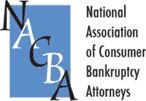
In the United States, the average student loan debt is $32,731. Since 2016, the average amount of student loan debt has increased by 20%. Additionally, over 600,000 borrowers owe over $200,000 in student debt, a number that will likely increase. As tuition costs continue to rise along with inflation, more graduates cannot make their monthly student debt payments. There is a common misconception that filing for bankruptcy will never discharge a person’s student loan debt. However, it is possible to have your student loan debt discharged in bankruptcy under certain circumstances.
Is it Possible to Have Student Loan Debt Discharged Through Bankruptcy?
It is challenging but not impossible to have student debt wiped out through bankruptcy. You will need to prove that the debt imposes an undue hardship on you and your dependents. When evaluating whether a borrower has shown undue hardship, bankruptcy courts use legal tests based on rulings in other cases. Most commonly, bankruptcy courts use the Brunner test. Brunner v. New York State Higher Educ. Servs. Corp., 831 F. 2d 395 (2d Cir. 1987). Under this test, you will need to prove that:
- You cannot maintain a minimal standard of living based on your current income and expenses if you are forced to repay your student loans
- Additional circumstances exist showing that your financial state of affairs will likely persist for a significant portion of the period of your student loans, and
- You have made good faith efforts to repay your student loans
When a claimant can prove that undue hardship exists successfully, the bankruptcy court will completely cancel or discharge student loan debt. Additionally, as soon as you file for bankruptcy, there will be an automatic stay protecting you from creditors pursuing the collection of your other debts. This day will be in place until your case is resolved or until the creditor receives permission from the bankruptcy court to attempt to collect from you again.
The Totality of the Circumstances Test
Most courts, including the federal courts of appeal, have adopted the Brunner test, but some courts have begun questioning whether they need to use a different standard. For example, some courts look at the totality of your circumstances when deciding whether you would suffer undue hardship from having to repay your student loan. When a court uses this task, you will not need to prove all of the elements of the Brunner test. Judges will be able to consider other factors. There are a few other tests, and the test used in your case will depend on the jurisdiction you are in and the judge presiding over your case.
How to Discharge Your Student Loans Through Bankruptcy
Your student loans will not be automatically discharged through bankruptcy. Instead, you will need to file a petition, called an adversary proceeding, asking the court to decide your student loan debt. Suppose you have already filed for bankruptcy but did not include a petition to discharge your student loan debt. In that case, you can reopen your case anytime to file the proceeding without paying an additional filing fee. Filing an adversary proceeding is not as straightforward as filing a regular Chapter 13 bankruptcy petition. Make sure you consult with an attorney with knowledge and experience related to discharging student loan debt.
Examples of Undue Hardship
Ultimately, it will be up to the bankruptcy court to determine whether you meet the “undue standard” requirement. An example of undue hardship would be a person in her 60s who still has $35,000 in student loan debt from 20 years ago. Perhaps the student loan debt had grown to be over $95,000. She now has chronic medical problems, and her only income is a social security check of $750 per month. The bankruptcy court would probably discharge her debt as long as she had made a good-faith effort to maximize her income, minimize expenses, and obtain employment.
Bankruptcy courts are more likely to grant a discharge of student debt in cases where the borrower did not benefit from the education or went to a fraudulent school. In other cases, borrowers who take out significant student debt but find themselves in low-paying careers may be able to show undue hardship. For example, if a married couple had over $100,000 in debt and were working as teachers in a low-income area and staying on a budget, they may be able to show undue hardship.
Income-Based Repayment Plans
To have your student debt discharged in bankruptcy, you must show that you have already made good-faith efforts to repay your student loans. With the availability of income-based loan repayment plans, judges are sometimes more hesitant to find that a debtor has made a good faith effort to repay a student debt. For example, if a debtor has not tried to use an income-based repayment plan, and such a plan could provide him or her with extensive relief, the court may be less inclined to discharge the student loan debt.
You are not required to have participated in an income-based replacement plan to meet the undue hardship rule. Nonetheless, your attorney should be prepared to argue that using an income-based repayment plan will not provide you the same comprehensive debt relief as a bankruptcy discharge.
Is Bankruptcy a Good Option for Me?
If you believe that you may be able to prove undue hardship and Court, filing for bankruptcy could be a strategic option for you. Speaking to an attorney about the pros and cons of filing for bankruptcy and whether you are likely to be able to prove undue hardship can help you make an informed decision.
Depending on the amount of your student loan debt, it may not be worth filing for bankruptcy. A bankruptcy will be on your credit history for at least 10 years, and you will need to pay expenses associated with filing for bankruptcy. There are also limits on how often you can file for bankruptcy. On the other hand, if you have significant student loan debt and cannot make the minimum monthly payments, it is worth looking into filing for bankruptcy for a fresh financial start.










